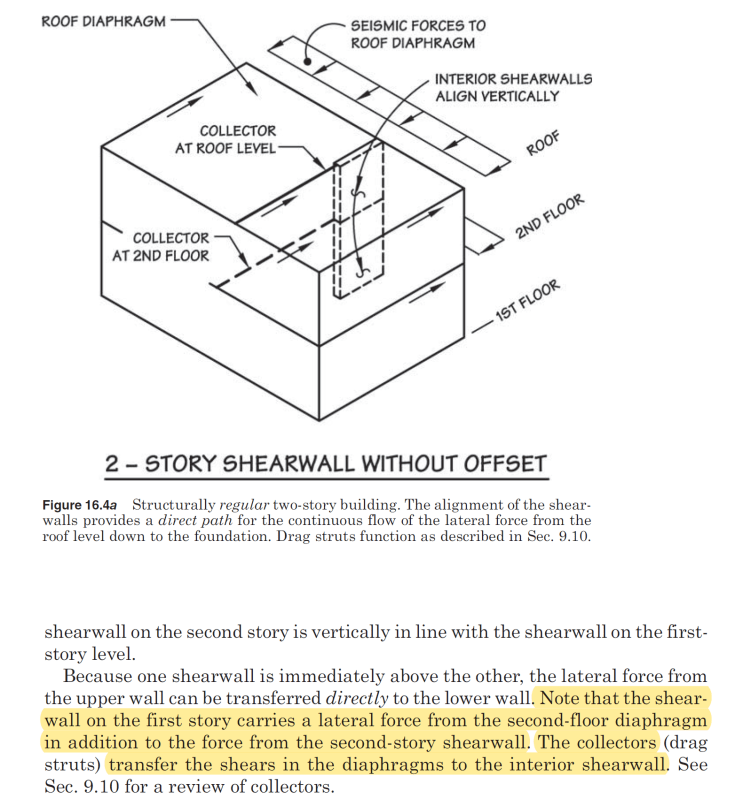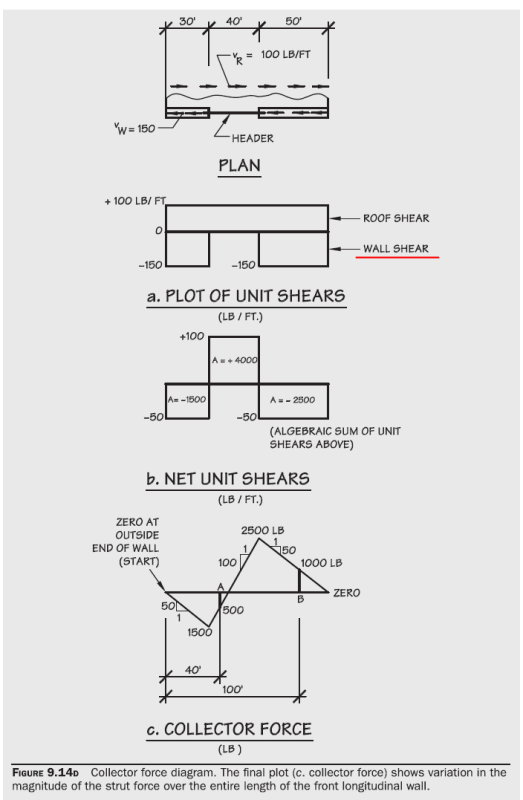LockeBT
Structural
- May 9, 2021
- 55
Question is based on the text "Design of Wood Structures" by Donald Bryer.
In one example of a box-shaped 2-story building with stacked interior shearwalls, the text mentioned that the shearwall below will take the lateral force from the shearwall directly above it IN ADDITION to the shear force from the diaphragm (via a collector).
Usually I never use the diaphragm force, Fpx, to design shearwalls, only Fx. However it seems when you have a collector tying into a shearwall, that shearwall will now also take the force transferred by said collector (ie a force derived from Fpx) ON TOP OF the Fx force based on its tributary.
Appreciate any clarifications.
Edit: Picture for clarity

In one example of a box-shaped 2-story building with stacked interior shearwalls, the text mentioned that the shearwall below will take the lateral force from the shearwall directly above it IN ADDITION to the shear force from the diaphragm (via a collector).
Usually I never use the diaphragm force, Fpx, to design shearwalls, only Fx. However it seems when you have a collector tying into a shearwall, that shearwall will now also take the force transferred by said collector (ie a force derived from Fpx) ON TOP OF the Fx force based on its tributary.
Appreciate any clarifications.
Edit: Picture for clarity


